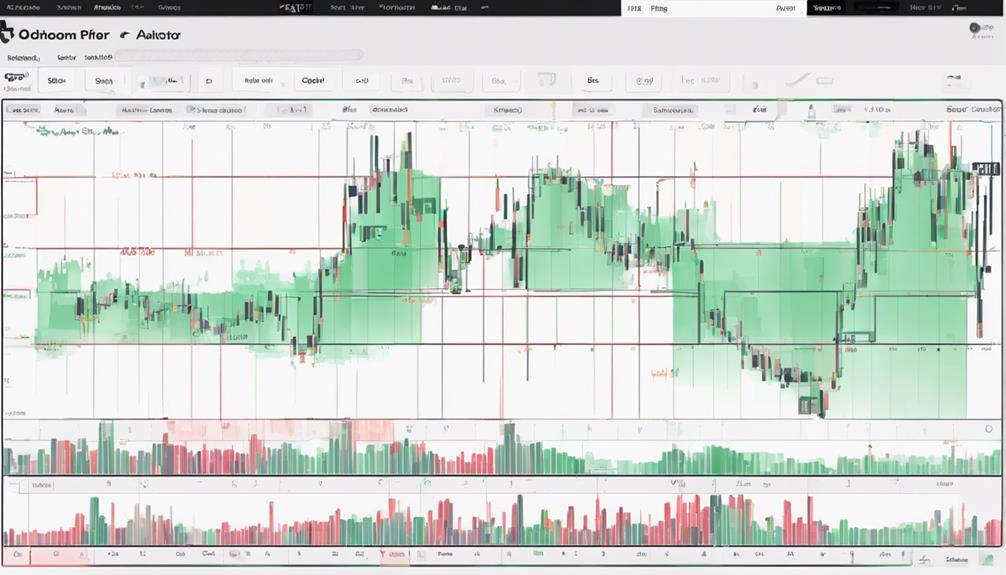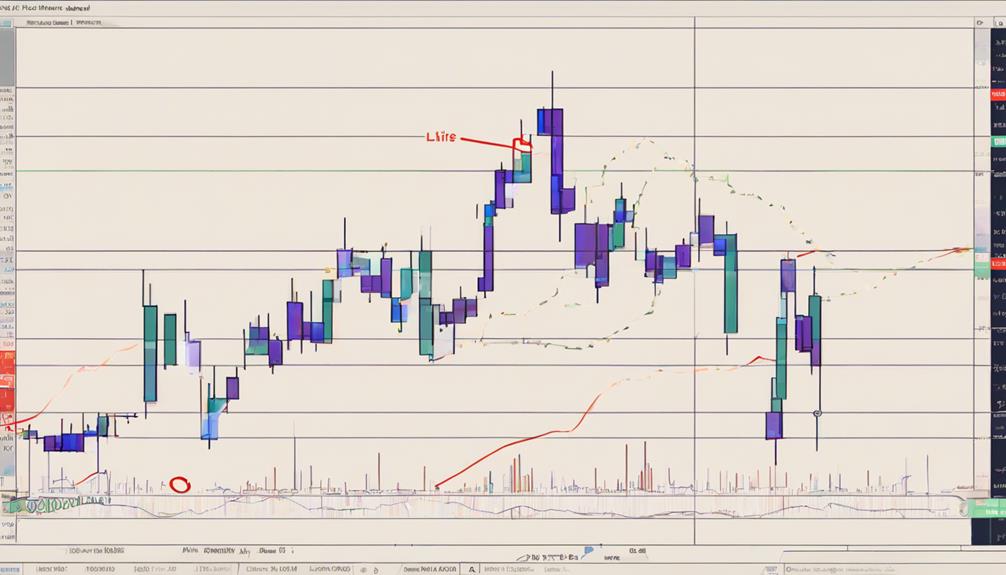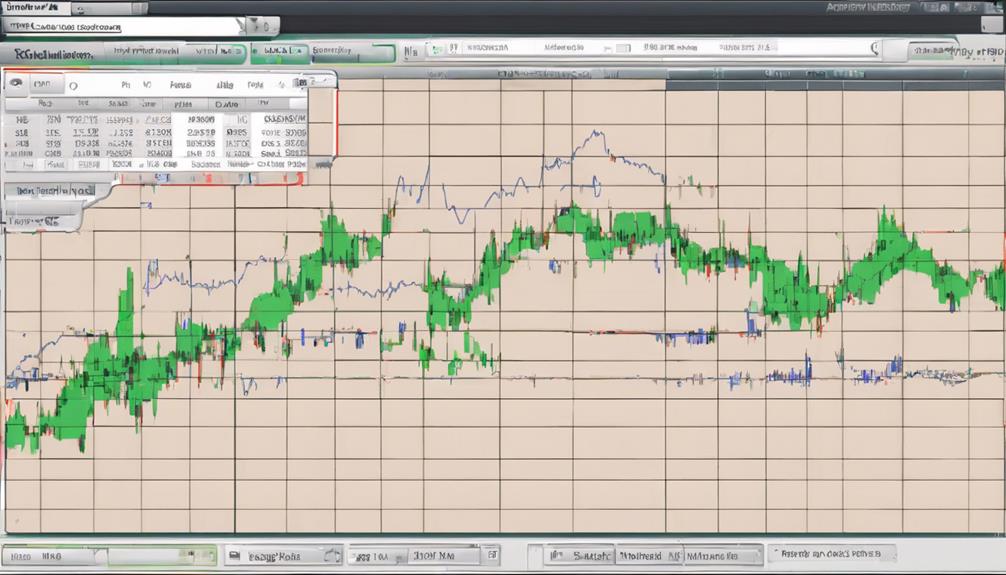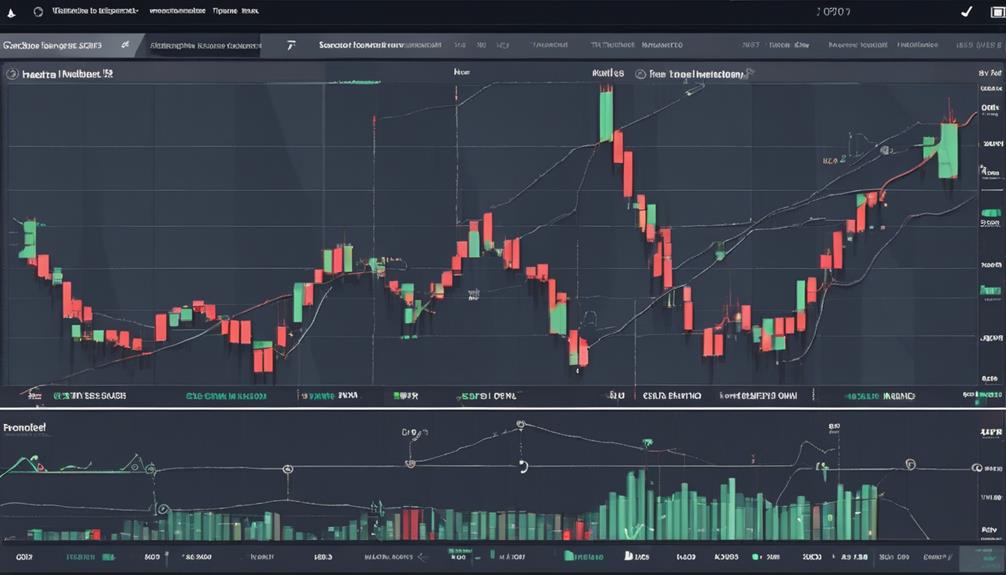Imagine navigating the intricate currents of the financial markets with precision and confidence. The Aroon Indicator holds the key to unlocking potential opportunities and optimizing market timing strategies.
As you delve into the depths of this guide, discover how the Aroon Indicator can empower you with valuable insights into trends, momentum, and potential reversals. Understanding its nuances and practical applications could be the game-changer you've been seeking for your trading endeavors.
Understanding Aroon Indicator Calculation
To grasp the essence of Aroon Indicator Calculation, delve into its precise methodology for evaluating market trends through Aroon-Up and Aroon-Down calculations.
The Aroon-Up is determined by ((25 – Days Since Highest High) / 25) * 100%, while Aroon-Down is calculated as ((25 – Days Since Lowest Low) / 25) * 100%. These indicators track the time elapsed since the highest high and lowest low over a specific period, typically 25 days, making them suitable for trend analysis.
Aroon values close to 100 indicate recent highs, whereas values nearing 0 suggest recent lows, providing insights into trend strength. By understanding these calculations, you can effectively analyze market trends and make informed decisions based on Aroon Indicator signals.
Interpreting Aroon Oscillator Signals

Interpreting Aroon Oscillator signals involves analyzing the crossover points between the Aroon-Up and Aroon-Down lines to identify potential trend changes, reversals, and entry/exit points.
A bullish signal is generated when the Aroon-Up line crosses above the Aroon-Down line, indicating a strengthening uptrend. Conversely, a bearish signal occurs when the Aroon-Down line crosses above the Aroon-Up line, signaling a potential downtrend.
The Aroon Oscillator fluctuates around the zero line, providing insights into the strength of the current trend. Traders use these trade signals to make informed decisions about market entry and exit strategies.
New Trend Identification With Aroon

As you shift your focus to 'New Trend Identification With Aroon,' understanding the Aroon-Up and Aroon-Down indicators becomes pivotal for recognizing emerging market trends.
The Aroon-Up indicates the strength of a new uptrend by measuring the time since the last 25-period high, while the Aroon-Down highlights the emergence of a new downtrend by tracking the time since the last 25-period low.
Crossovers between Aroon-Up and Aroon-Down signal the start of either a bullish trend (Aroon-Up crossing above Aroon-Down) or a bearish trend (Aroon-Down rising above 50).
Detecting Market Consolidation With Aroon

During market analysis, detecting periods of consolidation with the Aroon indicator involves monitoring the simultaneous positioning of both Aroon-Up and Aroon-Down below 50. Market consolidation is characterized by a lack of new highs or lows in price action, leading to narrow parallel declines in the Aroon indicators.
These parallel movements suggest a trading range where the market is neither in an uptrend nor a downtrend. When both Aroon-Up and Aroon-Down remain below 50, it indicates a period of indecision and potential consolidation.
The breakout from this consolidation phase usually occurs when one of the Aroon indicators crosses above 50, signaling a potential market movement and a possible shift in trend direction.
Aroon Indicator Limitations and Strategies

In trading, understanding the limitations and implementing effective strategies while using the Aroon indicator is crucial for maximizing its utility and accuracy. Aroon indicators may offer late signals in choppy or volatile markets, but combining them with other indicators can enhance trading precision.
Utilizing crossovers between Aroon-Up and Aroon-Down lines provides valuable signals for market timing. These indicators are instrumental in spotting trends, reversals, and consolidation patterns. When paired with price action analysis and fundamental research, Aroon becomes especially beneficial for long-term trades.
To overcome its limitations, traders can integrate Aroon with complementary indicators to refine their trading strategies and improve decision-making processes in various market conditions.
Can Market Analysis with Aroon Indicator Help with Market Timing?
When it comes to analyzing markets, Aroon indicator can be a valuable tool for determining market timing. By using Aroon indicator, investors can gain insights into when to enter or exit the market, based on the indicator’s signals. Ultimately, market analysis with Aroon indicator can aid in making more informed investment decisions.
Frequently Asked Questions
What Is the Best Time Frame for the Aroon Indicator?
For the Aroon indicator, the best time frame varies based on your trading style. Day traders may find success with short intervals like 15 minutes, while swing traders could opt for daily or weekly charts. Consider your strategy and goals for optimal results.
What Is the Best Setting for Aroon Indicator?
For optimal performance, set the Aroon indicator at default 14 for short-term insights or 25-30 for long-term trends. Personalize colors, adjust overbought/oversold levels, and tailor settings to your strategy for precise market timing.
How Accurate Is the Aroon Indicator?
In determining market trends, the Aroon Indicator is highly accurate by assessing the time since the last high or low. Values nearing 100 signify robust trends, while those near 0 indicate weak ones, aiding in precise market evaluations.
How Do You Read an Aroon Indicator?
To read an Aroon indicator effectively, monitor Aroon Up and Aroon Down. An Aroon Up crossing above Aroon Down hints at potential price highs. Aroon Down surpassing 50 suggests possible price lows. Both below 50 signify a market consolidation phase.
Conclusion
In conclusion, mastering the Aroon Indicator can significantly improve your market timing skills.
Did you know that traders who effectively combine the Aroon Indicator with other technical analysis tools have been found to increase their profitability by over 20%?
By understanding the indicator's signals, limitations, and strategies, you can enhance your trading performance and make more informed decisions in the financial markets.
Keep honing your skills and stay ahead of the game with the Aroon Indicator.
